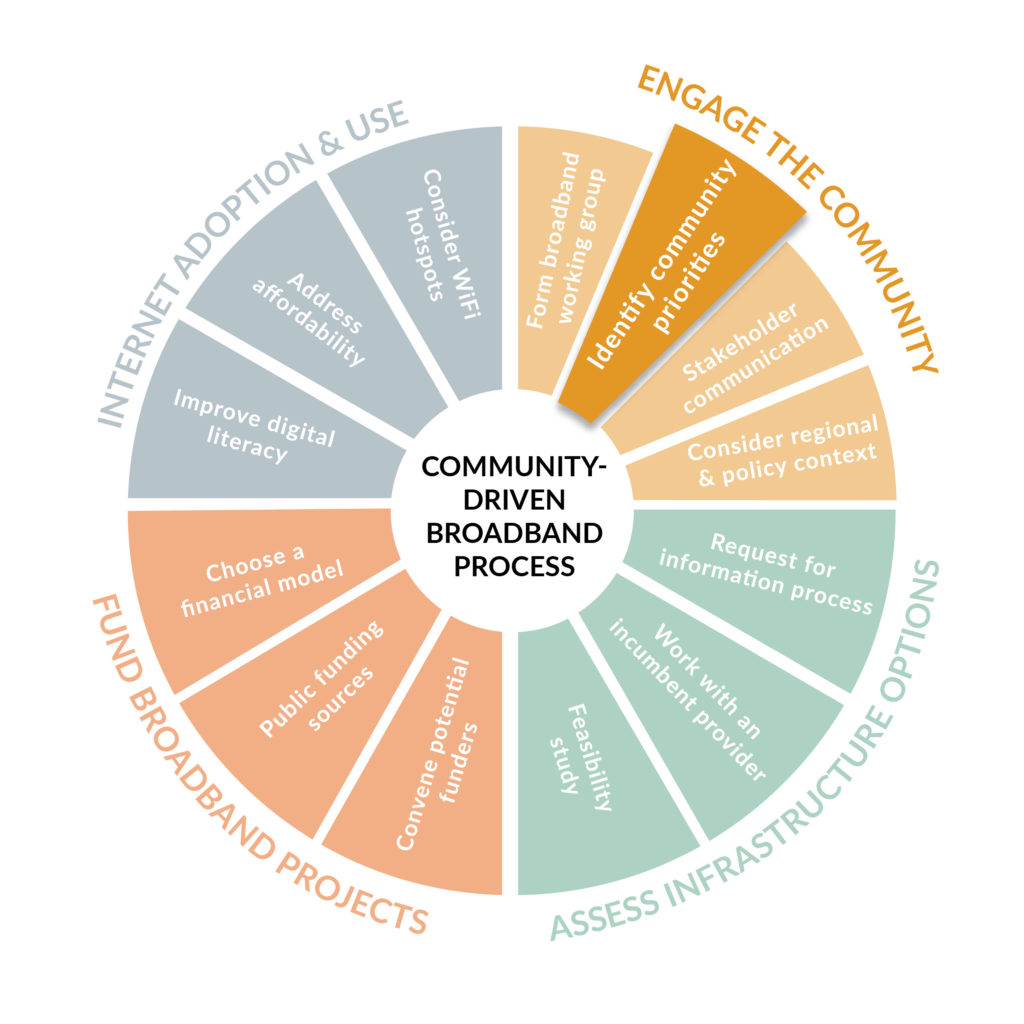
The Swan’s Island Broadband Committee needed to figure out where the internet service gaps were located so they could focus improvement efforts in the most effective way possible. They also realized the need for broader community awareness around broadband, in order for the community to eventually improve service.
HOW IT WORKS
The community survey provided background on why broadband is important and collected needed information for those taking action toward improving internet service. By taking the survey, community members can see first-hand the quality of their own internet service. The results of the survey can be shared at community meetings, on municipal websites, and/or through social media.
IMPLEMENTATION STEPS
- Plan the survey. Surveys can be expensive or time-consuming to conduct, so it’s important to ensure that the survey has a clear purpose and will generate the necessary information. Considering who will take the survey will determine the survey mode: online, paper, in-person, by mail, etc. The optimal time to announce or conduct a survey depends on the purpose and the audience. Swan’s Island was expecting a modest upgrade to internet service by the existing service provider, so the committee needed to administer the survey before the upgrade took place in order to educate the community on the problem, and after the upgrade was made in order to see what service gaps were addressed or remained. The Swan’s Island Broadband Committee planned their survey via email correspondence over the course of one month.
- Design and review the survey. Conducting surveys properly helps to limit the amount of bias or inaccuracy in responses. How your questions are worded and ordered can influence what a respondent perceives about the possible answers. It takes some time to form questions for the survey and then design how they are asked. The committee decided to do this together, but it can be delegated to one or two members. The committee met for two hours, to finalize the plan, consult with Island Institute staff who helped with the survey design, and draft the questions. The questions were revised over the course of a week. It then took about a couple of hours to create the online survey from the drafted questions. Online surveys save considerable time with collecting and analyzing results.
- Conduct the survey. Sometimes the hardest part of a survey is getting people to take it. Think about using another mode to tell people about it or remind them to take it. The link to the Swan’s Island online survey was emailed and mailed to residents. Then committee members used word-of-mouth to remind people about it. They worked with small groups and individuals to take the survey, and in doing so, they shared more information about the topic. Over the course of the survey time period, many hours are expended in getting responses to the survey.
- Compile and review the responses. It’s helpful to look for patterns in survey responses and also individual responses. The committee anticipated seeing that the majority of residents would be unsatisfied with the current internet service and speed. On an individual level, a satisfied customer may have a unique internet service provider
CHALLENGES
- Volunteers. Consider how community members will learn about the survey, and whether or not they need assistance to respond to it. Who will help with that? Who will be responsible for reviewing results, which can take a lot of time?
- Cost. Especially for large communities, the cost of online surveys can get pretty high, and mailing surveys can also be expensive. Is there an organization than can provide in-kind support? Can paper surveys go out in mail already planned, e.g., tax bills?
RESULTS
With a population that triples during the summer, the Swan’s Island Broadband Committee decided to run the survey all summer long. Over the course of three months, the committee has received responses from 17% of their residents. The committee will run another survey after upgrades are completed to see if those who responded with poor internet speeds are more satisfied or if additional improvements should be pursued.
Originally published February 2017

